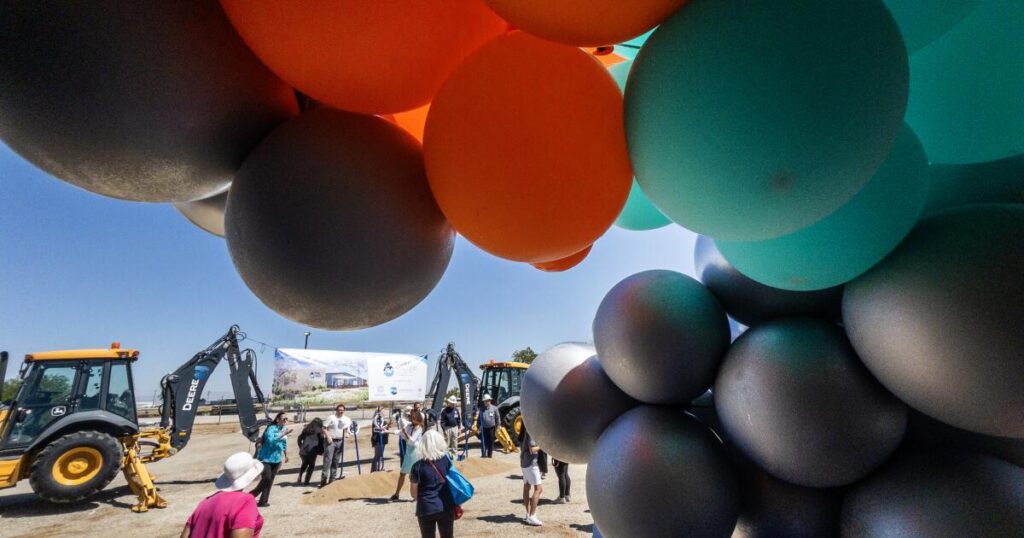As soaring fossil fuel emissions continue to fuel global warming, the Los Angeles area has launched multiple projects aimed at removing carbon dioxide from the air — an effort that developers say is destined to make Southern California a leader in climate adaptation. Global leader.
Recently, under the blazing Palmdale sun, state and local officials gathered to break ground on one such project, a first-of-its-kind wastewater treatment facility that would also remove carbon dioxide from the atmosphere.
Project Monarch, a public-private partnership between the Palmdale Water District and climate technology company Capture6, will not only provide residents with a new water supply, but will also help California achieve its goal of 100% renewable energy and carbon neutrality by 2045. Nancy Vogel, deputy secretary of water for the California Department of Natural Resources.
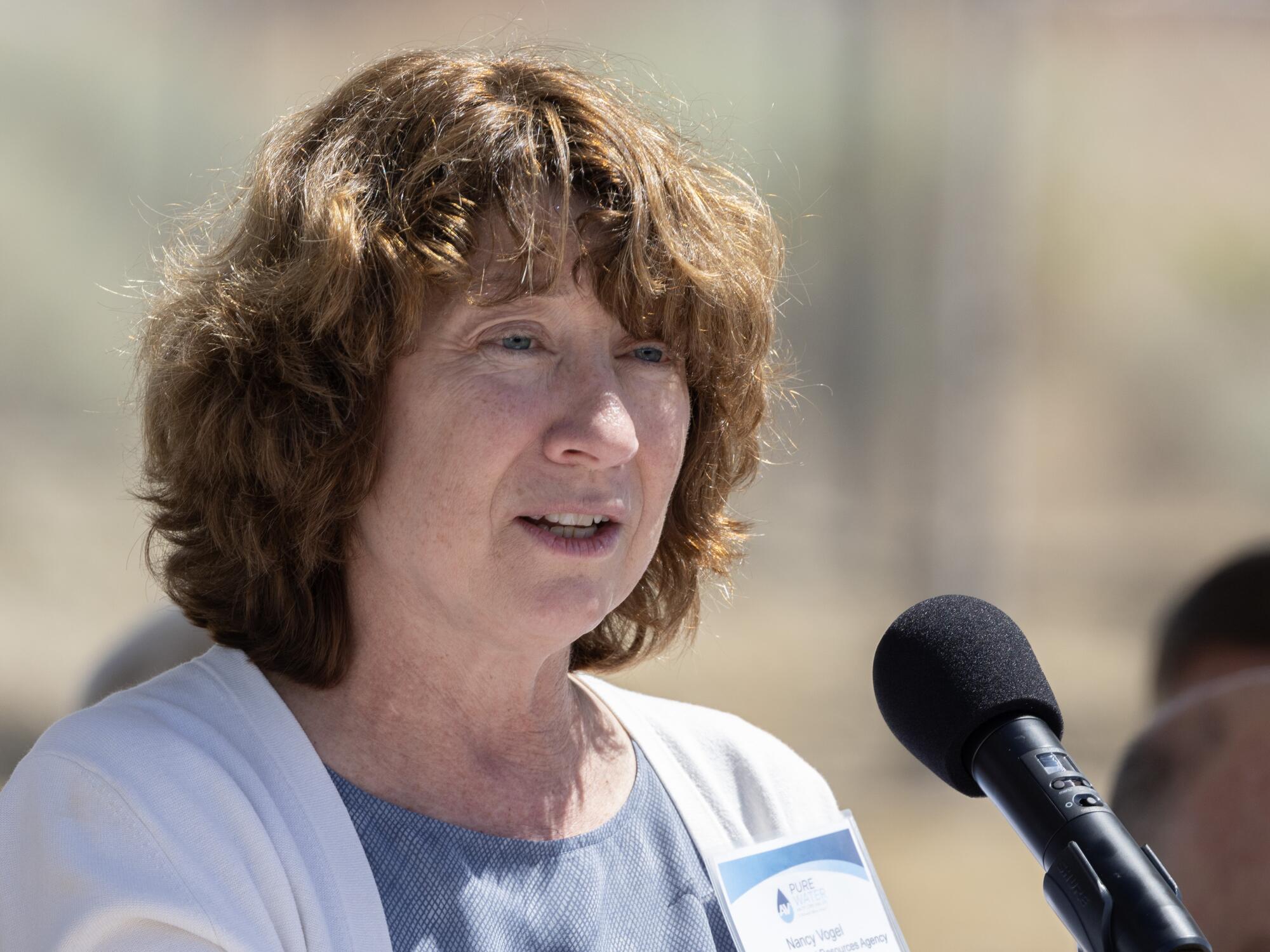
Nancy Vogel, California Department of Natural Resources Undersecretary for Water, announced the launch of Project Monarch in Palmdale.
(Myung J. Chun/Los Angeles Times)
“A cornerstone of California’s leadership on climate change is electrifying our economy and decarbonizing our grid, and we have set ambitious goals for that,” Vogel told the crowd Thursday. However, “we can’t achieve this by simply reducing emissions. We have to start capturing existing emissions.

Positive and impactful reporting on climate change, environment, health and science.
When completed, the Monarch project and its wastewater treatment component, Pure Water Antelope Valley, will purify up to 4.5 million gallons of water per day and capture 25,000 tons of atmospheric carbon dioxide per year. (A typical gasoline-powered car emits 4.6 tons of carbon annually, according to the EPA.)
Carbon dioxide from the extraction and burning of fossil fuels is one of the main drivers of climate change. However, global carbon dioxide emissions continue to hit new highs, with May readings from the Mauna Loa Observatory in Hawaii showing the largest two-year increase in peak carbon dioxide levels on record. The current level of carbon dioxide in the atmosphere is 427 parts per million and rising.
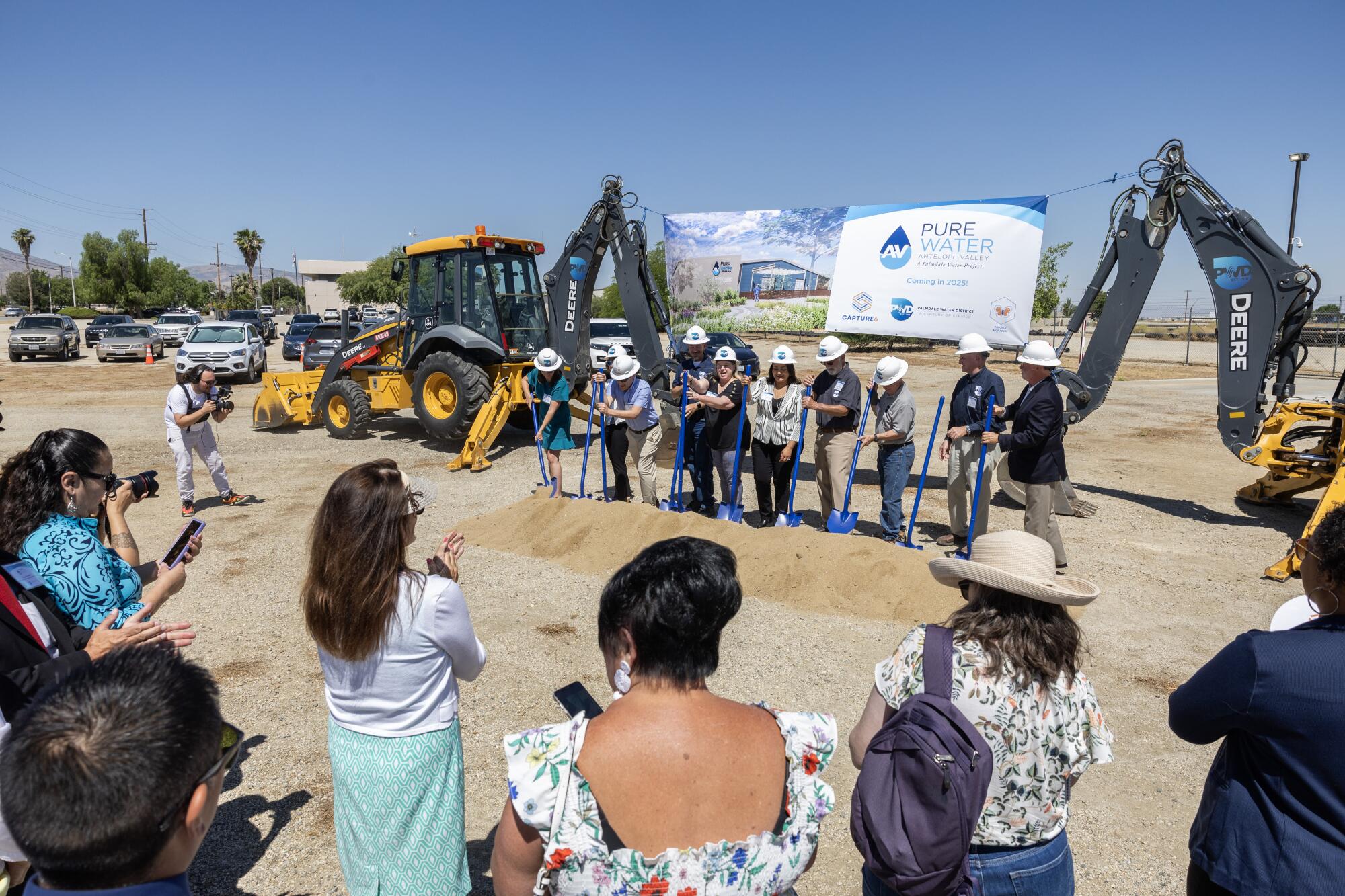
The project manager said the Monarch project will demonstrate proven technology for recycling wastewater into drinking water, while using Capture6’s first-of-its-kind technology to capture carbon dioxide directly from the air.
(Myung J. Chun/Los Angeles Times)
Efforts to reduce these emissions and remove carbon dioxide from the atmosphere are supported by the California Air Resources Board and the Intergovernmental Panel on Climate Change, both of which promote the use of so-called direct air capture technology.
“Pure water will allow us to better withstand droughts, provide local control of water, and improve the quality and quantity of groundwater,” said Dennis LaMoreaux, general manager of the Palmdale Water District. “Having Project Monarch the ability to capture carbon is a win-win for everyone.”
Capture6 has received $8 million in funding from the California Energy Commission. Meanwhile, the Biden administration announced investments of more than $3.5 billion in direct air capture programs across the country.
But the Palmdale project isn’t the only new carbon capture development in Los Angeles County. Officials from CarbonCapture Inc. gathered in Long Beach on Friday to introduce the nation’s first commercial-scale direct air capture system designed for mass production.
The device is similar to a cargo container and can remove more than 500 tons of carbon dioxide from the atmosphere each year.
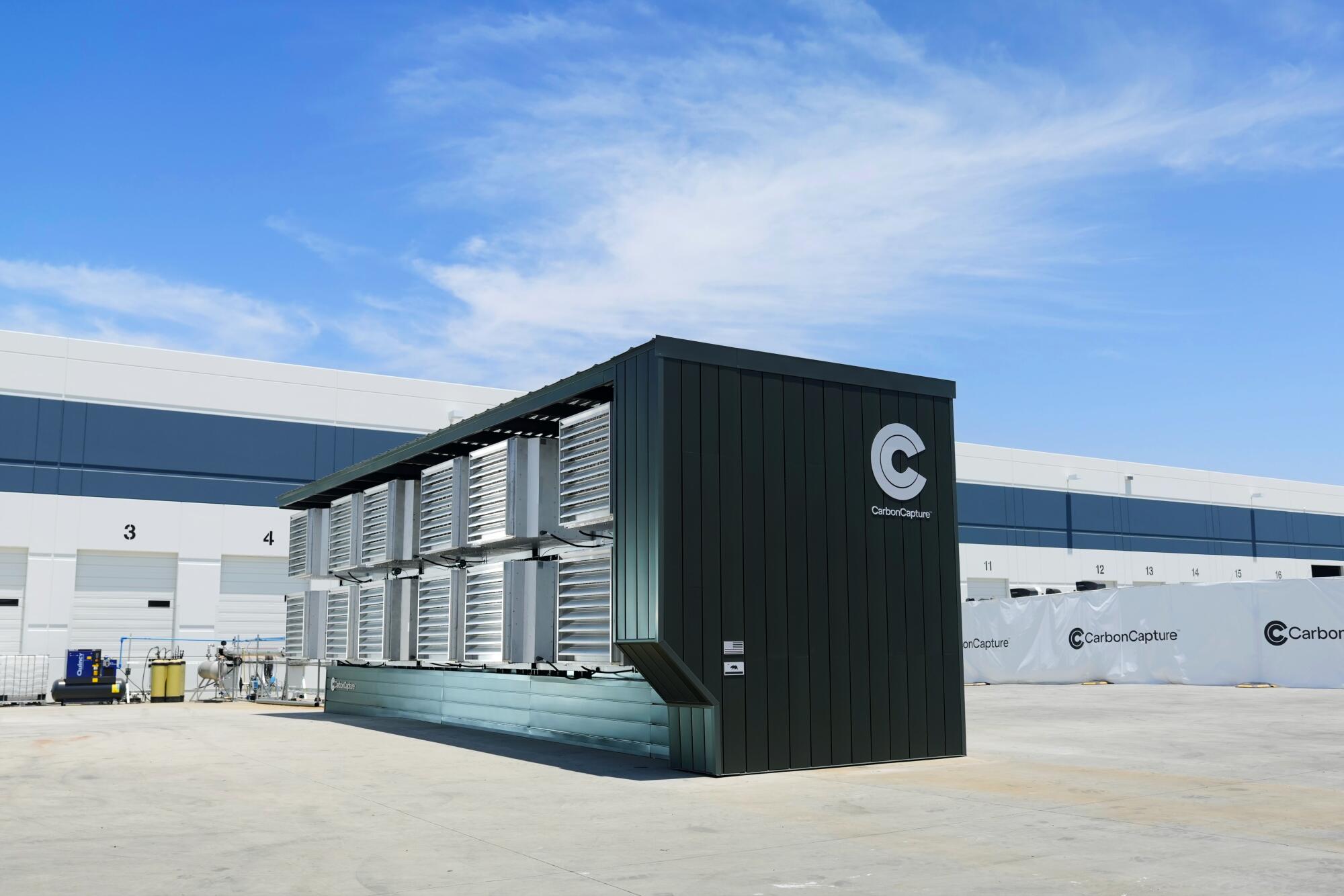
CarbonCapture Inc.’s Leo series of direct air capture modules are about to be mass-produced and can capture more than 500 tons of atmospheric carbon dioxide per year.
(Carbon Capture Company)
“What CarbonCapture Inc. is doing with its modular approach to direct air capture, along with its efforts to increase technology yields and reduce costs, underscores the integral role of the private sector in developing and deploying carbon management at the scale needed , to achieve a clean energy and industrial future,” Brad Crabtree, assistant secretary for fossil energy and carbon management at the U.S. Department of Energy, said in a statement.
The Los Angeles-based company also announced that it will mass-produce up to 4,000 DAC modules per year at its new facility in Mesa, Arizona.
It joins similar efforts in Los Angeles capturewhich works to remove carbon dioxide from the upper ocean; Los Angeles-based Avnos, which captures carbon while producing water; and Los Angeles-based Equatic, which works to use the ocean to remove carbon dioxide from the atmosphere.
“The rest of the world knows that if Los Angeles and the broader state of California can do it, then other places can do it,” said Edward Sanders, chief operating officer of Equatic.
equality was born in UCLA Carbon Management InstituteThe company says researchers have found a way to combine carbon dioxide removal with hydrogen generation, “addressing legacy and future emissions issues in one process.”
The company’s San Pedro plant pumps seawater through a series of electric panels that separate the water into hydrogen and oxygen and acidic and alkaline liquid streams. The industry says alkaline flows are exposed to the atmosphere and mineralize carbon dioxide into carbonates, which are then dissolved and discharged back into the ocean for permanent storage. Saunders said the process complies with all existing coastal regulations.
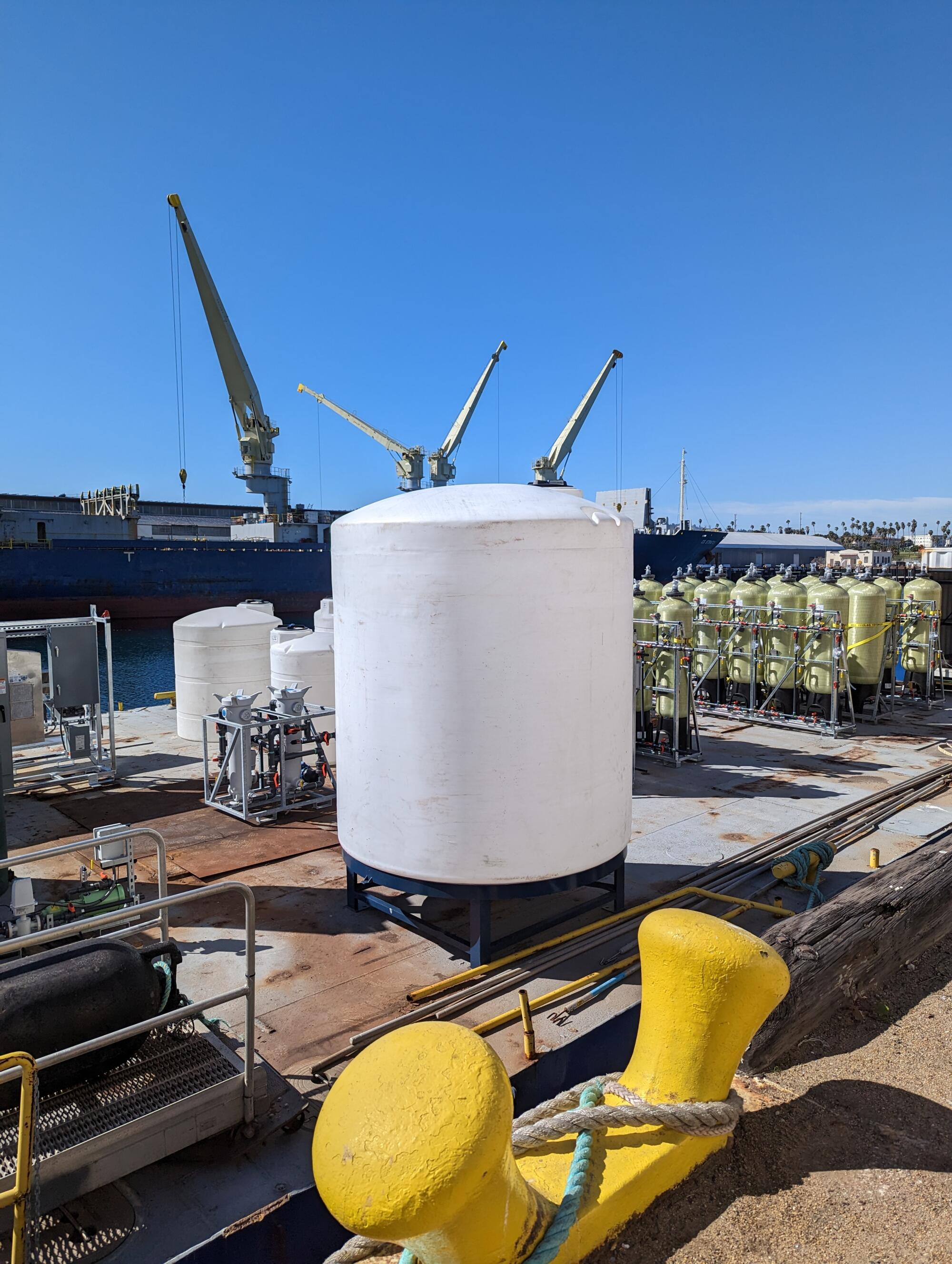
Equatic’s facility in San Pedro is dedicated to using the ocean to remove carbon dioxide from the atmosphere.
(equidistant)
Additionally, the hydrogen produced by the process is carbon negative, making it a source of renewable energy that can be used to fuel carbon dioxide removal processes or sold to other users, he said.
Earlier this month, Equatic announced that it would partner with a Canadian developer to build North America’s first commercial-scale ocean carbon dioxide removal plant in Quebec, following the success of another plant in Los Angeles and Singapore. Saunders said the San Pedro facility can capture about 40 tons of carbon dioxide per year, while the Quebec facility can capture about 100,000 tons of carbon dioxide per year.
“While it’s important to do this on a global scale, we recognize that there’s a lot going on in Los Angeles and being able to have people come through and see it – walk in and see one of the plants, really house the carbon that we’ve been breaking away from.” They have the atmosphere in their hands – that’s really important,” he said.
While individual projects are representative of Southern California’s carbon capture boom, they each employ different strategies.
Monarch’s planned carbon capture process begins at a new wastewater treatment facility in Palmdale, which will purify Los Angeles County’s recycled water for drinking water reuse. The purification process removes bacteria, viruses, and other harmful pathogens from water, but it also produces a byproduct: a salt solution called brine. The district plans to store the brine in open ponds, where it will stagnate until it evaporates.
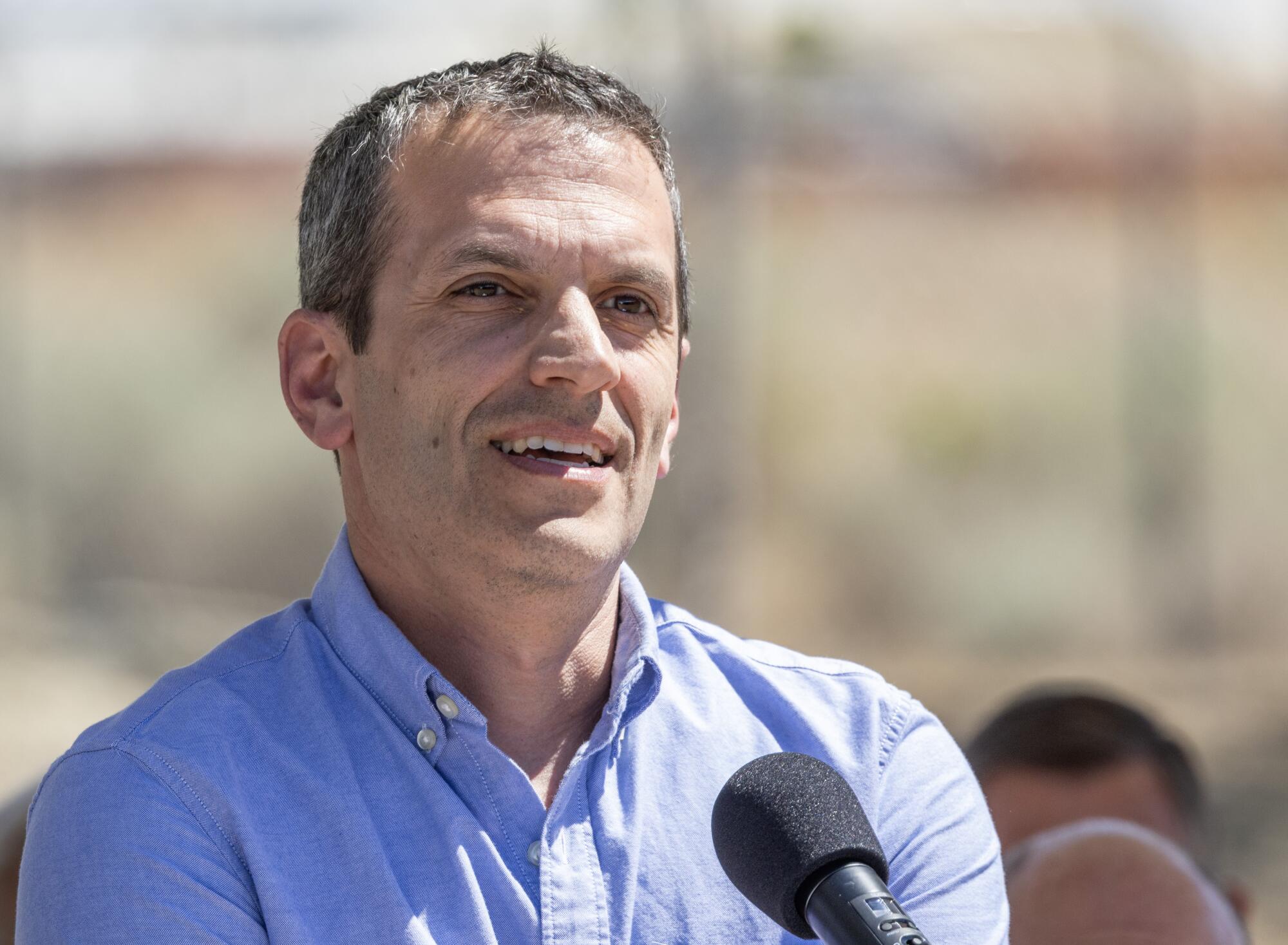
Capture6 CEO and co-founder Ethan Cohen-Cole attended the groundbreaking ceremony for Pure Water Antelope Valley and Project Monarch on Thursday in Palmdale .
(Myung J. Chun/Los Angeles Times)
Instead, Capture6’s technology will naturally remove carbon dioxide from the atmosphere by processing brine through a series of steps, first converting it into sodium hydroxide, and eventually into sodium carbonate, a mineralized form of captured carbon. The resulting rock dissolves in water and can be reused directly in water treatment processes or injected into aquifers or other non-potable underground formations for permanent storage.
Capture6 CEO Ethan Cohen-Cole said: “This facility has the potential to prove on a state and national scale and globally that we can build carbon-negative water treatment facilities.”
Cohen-Cole said the project will run on grid energy, which is increasingly renewable in California. He added that Los Angeles’ proactive and innovative approach to water and energy issues makes it a perfect fit for the project, which will be the first of four such efforts around the world.
“California looks a lot like many other water-scarce places around the world that also have incentives to decarbonize,” he said. “Those two combined make it a great place.”
However, the carbon capture process is not without its drawbacks. It can be expensive and energy-intensive, and there is still a lot of active research into the best means and methods of storing carbon.
Many companies sell carbon removal credits to other companies, such as Meta, Chase, McKinsey and Boeing. While Capture6, Equatic and CarbonCapture Inc. have high-integrity credits, the carbon credit market in general has been criticized for “greenwashing” their reputations by allowing polluters to continue producing emissions.
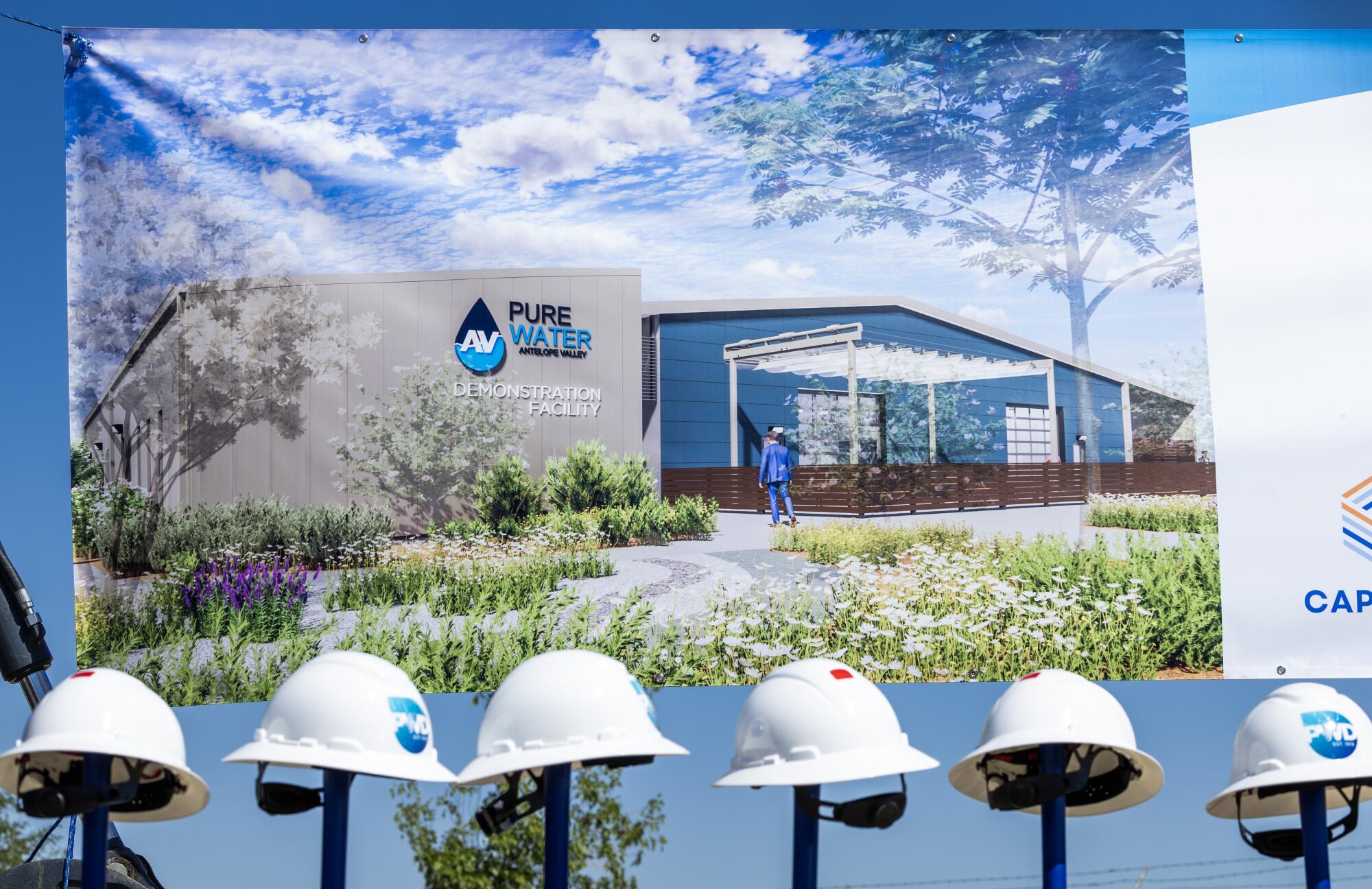
A hard hat in front of a rendering of the Antelope Valley Pure Water Project and the Monarch Project, which when completed will produce up to 4.5 million gallons of pure water per day and capture 25,000 tons of carbon dioxide from the atmosphere each year.
(Myung J. Chun/Los Angeles Times)
Likewise, experts say rapid growth in the ability to remove carbon dioxide from the atmosphere should not equate to allowing emissions to continue. The Intergovernmental Panel on Climate Change estimates that to limit global warming to 1.5 degrees Celsius by mid-century, 6 billion to 12 billion tons of carbon dioxide will need to be removed annually.
“Even if we cut emissions to zero tomorrow, which isn’t happening, we’d still need to remove billions of tons of carbon dioxide from the atmosphere,” said Equatic’s Saunders. “But what we don’t want to do is do it in five years or so. Trapped within a decade, there is no technology to remove the material that cannot be reduced, or to clean up the atmosphere from the past 120 years.”
Cohen-Cole expressed similar thoughts shortly after he and other officials gathered in hard hats and shovels to break ground on the Pure Water Project and the Monarch Project, which is expected to open in 2025 Put into operation.
“This only works if we prioritize reducing emissions,” Cohen-Cole said. “I’m absolutely not going to argue that we should use carbon removals in the absence of emissions reductions — we’re inspired by the fact that both California and the Intergovernmental Panel on Climate Change say we need to do that now. We There is no choice.
communication
Towards a more sustainable California
Get Boiling Point, our newsletter on climate change, energy and the environment, and become part of the conversation and solutions.
From time to time you may receive promotional content from the Los Angeles Times.

